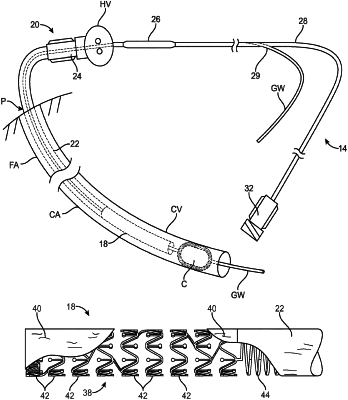| CPC A61M 25/0052 (2013.01) [A61M 25/0074 (2013.01); A61M 2202/0014 (2013.01)] | 35 Claims |

|
1. A catheter comprising:
a tubular catheter body having a proximal end, a distal end, and a lumen extending therebetween; and
a radially expandable distal tip at the distal end of the tubular catheter body, the radially expandable distal tip having a central passage contiguous with the lumen of the tubular catheter body, wherein the radially expandable distal tip comprises a supporting structure coupled to a membrane, wherein the supporting structure comprises:
(a) a plurality of radially expandable circumferential rings arranged along a longitudinal axis with circumferential gaps therebetween; and
(b) a multiplicity of supporting elements, each supporting element having a base end and a free end, wherein the base end is attached to one of the radially expandable circumferential rings and the free end extends axially and/or circumferentially away from the one of the radially expandable circumferential rings;
wherein at least some of the free ends of the supporting elements are recessed within the radially expandable circumferential rings and do not protrude into the circumferential gaps prior to radial expansion of the radially expandable distal tip; and
wherein at least some of the free ends of the supporting elements protrude into the circumferential gaps after expansion of the radially expandable distal tip.
|